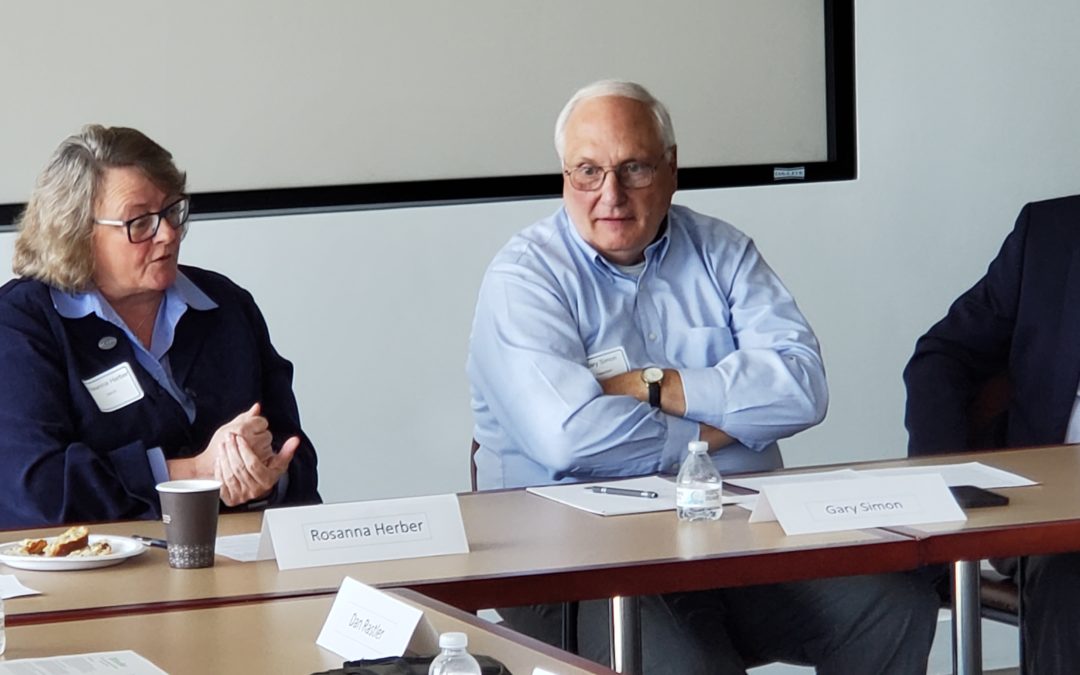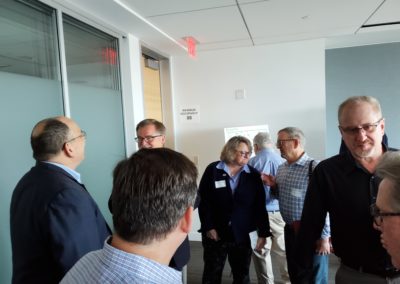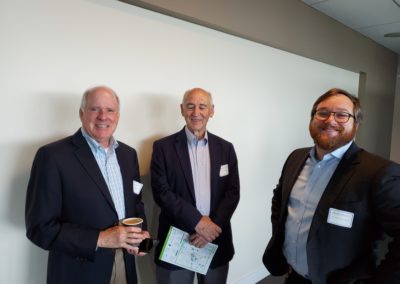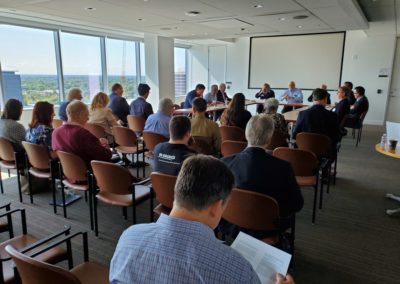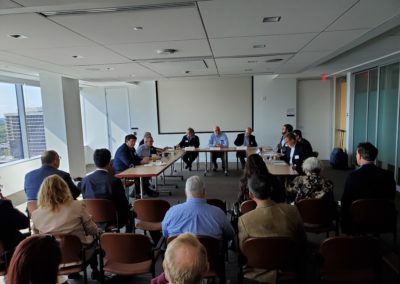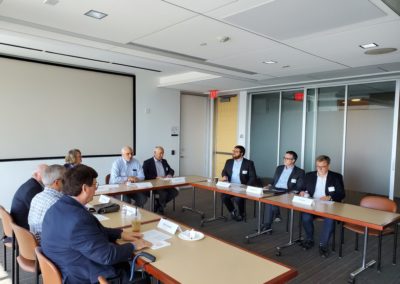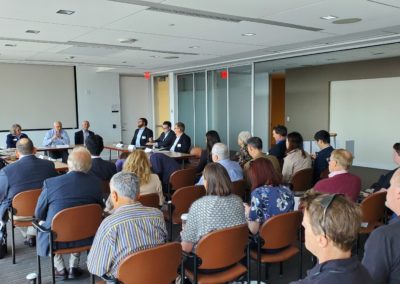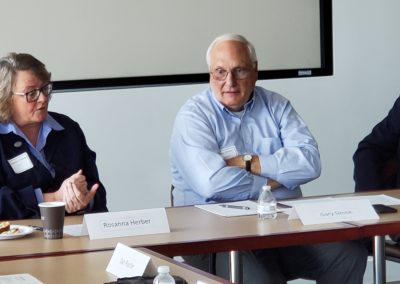Our May 7 Roundtable took full advantage of our panel of 9 experts and an audience of three dozen. So many ideas were flying around the room that one participant said it was like drinking from a fire hose. The clock ran out on this session, but the crowd was very interested in continuing it to another one or more.
The focus was not on what policy should guide the evolution of the utility business, but on what business opportunities for entrepreneurs may emerge as that business changes. It is impossible to capture all the ideas, but here are the highlights many of which involved software development:
- Aggregate supply from hundreds of small sources into a “virtual power plant” of 100 MW or more that can bid more easily into CAISO and get full value for the power provided.
- Do the same with points of load control, using sophisticated software and distributed load controls
- Get a better picture of the “energy density map” of loads in a service area and manage less dense areas differently (could be close to net zero draw from the grid) than more dense areas (with a big draw on grid).
- Find ways to add more renewables, integrate EV charging/discharging (V2G), and storage without adding substantial new costs.
- a) Could involve providing more reliability and backup locally rather than at great distance in order to avoid adding a lot more T&D investment
- b) Provide backup as an explicit service to customers going off-grid
- c) Add storage at strategically located “caches” to avoid T&D investment
- d) If complexity brings new costs, find ways to simplify to avoid costs.
- e) Look at increasing sensors, micro-controls, and software-based network management as a way to avoid investing in large hard assets.
- Create software that can achieve seamless integration of microgrid devices with utility SCADA systems
- Use Stone Edge Farm in Sonoma as a test site for innovative new renewable and microgrid demos.
- Become a central buyer and dispatcher of supply and Virtual Power Plants for CCAs. This is a function which has big economies of scale.
- Provide management services for a network of microgrids and backup generation
- Become a purchaser and aggregator of existing rooftop solar installations for which current owners and new owners of homes with solar panels no longer want responsibility.
- Invent very inexpensive point controls on loads that can communicate with systems to aggregate load under control.
- Prepare for circumstances where value of on-site production of power has lower value.
- a) Mixed monthly charge rather than on a per-kWh basis.
- b) Could mean a fixed fee of $80/month charged by the grid
- c)Find a way to turn the high fixed cost nature of poles and wires into an advantage rather than a problem
- Offer to refinance “stranded” contracts for renewables that are surplus to shrinking utility needs and worth less to new buyers at CCAs—stretch out payment terms, etc.
- Develop technologies to underground distribution lines inexpensively to reduce liabilities on wildfires—trenchless conduit-laying, for example.
- Re-think utility business not as supplying power, but as managing a network of assets largely owned by others.
- Approach CCAs about using reinvestment of “profits” in local supply or load control projects.

